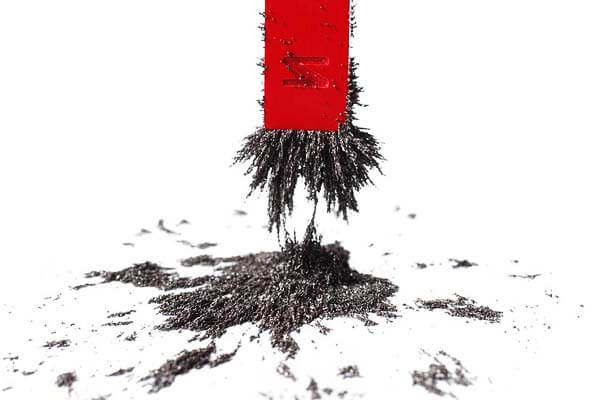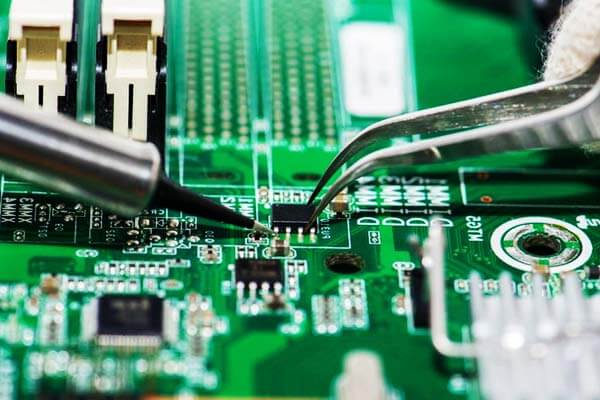1. Introduzzjoni
Il-landa tintuża ħafna f'diversi applikazzjonijiet, mill-produzzjoni ta 'ligi bħall-bronż għar-rwol tagħha fil-modern elettronika u issaldjar.
Iżda minkejja l-utilità tiegħu, ħafna jistaqsu jekk il-landa għandhiex xi proprjetajiet manjetiċi.
Dan l-artikolu se jwieġeb din il-mistoqsija billi jeżamina l-proprjetajiet tal-landa, kif iġib ruħu f'kamp manjetiku, u kif dawn il-karatteristiċi jaffettwaw l-użi tiegħu f'industriji differenti. Allura, ejja nibdew!
2. X'inhu Tin?
Landa (simbolu Sn, numru atomiku 50) huwa a element kimiku fil- grupp tal-karbonju tat-tabella perjodika.

Ilu magħruf u użat mill-bnedmin għal aktar minn 5,000 snin, primarjament biex tagħmel ligi, speċjalment bronż.
Storikament, landa kienet kruċjali fl-iżvilupp taċ-ċiviltà, użati għall-għodda, muniti, u oġġetti dekorattivi.
Huwa relattivament artab, metall tal-fidda li huwa reżistenti għall-korrużjoni, li jagħmilha ideali għall-użu fi issaldjar, kif ukoll fi Ippakkjar tal-ikel.
Il-landa ħafna drabi hija liga ma 'metalli oħra, bħal ram, ċomb, u l-antimonju, biex toħloq materjali bi proprjetajiet imtejba.
Pereżempju, azzar miksi bil-landa tintuża ħafna fl-industrija tal-ikel u tax-xorb għall-ħolqien bottijiet tal-landa li jippreservaw l-ikel għal perjodi twal.
3. Huwa tal-landa manjetika?
Issa, ejja nindirizzaw il-mistoqsija ewlenija: Huwa manjetiku tal-landa?

Spjegazzjoni Xjentifika tal-Proprjetajiet Manjetiċi tal-Landa
It-tweġiba hija resounding le, landa mhix manjetika. Dan għaliex il-landa hija a mhux ferromanjetiku metall.
Materjali ferromanjetiċi, bħal ħadid, Nickel, u Kobalt, huma manjetiċi minħabba li l-mumenti manjetiċi atomiċi tagħhom jallinjaw fil-preżenza ta 'kamp manjetiku estern.
Dan l-allinjament jikkawża li jiġu attirati għall-kalamiti.
B'kuntrast, l-istruttura atomika tal-landa ma tippermettix li l-mumenti manjetiċi tagħha jallinjaw b'tali mod, tagħmilha mhux manjetiċi.
Anke meta espost għal kamp manjetiku, landa ma turix attrazzjoni jew repulsjoni qawwija.
Għalhekk, landa hija kkunsidrata dijamanjetiċi, jiġifieri huwa dgħajjef repelled minn kamp manjetiku, iżda l-effett huwa kważi imperċettibbli fl-applikazzjonijiet prattiċi.
Fatturi li jaffettwaw il-propjetajiet manjetiċi tal-landa
In-nuqqas ta 'manjetiżmu tal-landa huwa l-aktar minħabba tiegħu konfigurazzjoni elettronika u struttura atomika.
B'differenza metalli ferromanjetiċi, fejn elettroni mhux imqabbla jikkontribwixxu għall-imġieba manjetika, l-elettroni tal-landa huma mqabbda b'tali mod li ma jikkontribwixxux għal mument manjetiku.
Bħala riżultat, landa ma tirrispondix għal kampi manjetiċi bħall-ħadid jew nikil.
4. Proprjetajiet manjetiċi tal-landa meta mqabbla ma 'metalli oħra
Biex tifhem għaliex il-landa jaġixxi b'mod differenti minn metalli manjetiċi, huwa utli li titqabbel ma 'metalli li juru proprjetajiet manjetiċi.
Dan it-tqabbil jenfasizza d-differenzi fundamentali fl-istrutturi atomiċi u l-imġiba tagħhom fil-kampi manjetiċi.
Metalli Ferromanjetiċi (E.g., Ħadid, Kobalt, Nickel)
Il-metalli ferromanjetiċi huma l-aktar materjali manjetiċi magħrufa.
Metalli simili ħadid, Kobalt, u Nickel juru proprjetajiet manjetiċi qawwija minħabba li l-atomi tagħhom għandhom mument manjetiku li jista 'jallinja ma' kamp manjetiku estern.
Meta dawn il-metalli jitqiegħdu f'kamp manjetiku, l-atomi tagħhom jallinjaw fl-istess direzzjoni, toħloq attrazzjoni qawwija għall-kalamita.
Barra minn hekk, materjali ferromanjetiċi jistgħu jsiru magnetizzati b'mod permanenti, li jżommu l-proprjetajiet manjetiċi tagħhom anke wara li l-kamp estern jitneħħa.
Metalli Paramanjetiċi (E.g., Aluminju, Platinu)
Paramanjetiċi metalli, bħal aluminju u platinu, huma dgħajjef attirati għall-kalamiti.
Filwaqt li dawn il-metalli għandhom elettroni mhux imqabbla, il-mumenti manjetiċi fl-atomi tagħhom ma jallinjawx b'mod qawwi daqs dawk f'materjali ferromanjetiċi.
Bħala riżultat, l-attrazzjoni hija dgħajfa u temporanja. Meta l-kamp manjetiku estern jitneħħa, metalli paramanjetiċi jerġgħu lura għall-istat mhux manjetiku tagħhom.
Struttura Atomika ta’ Tin
Il-landa ma turix l-istess imġieba manjetika bħal materjali ferromanjetiċi jew paramanjetiċi.
Tagħha struttura atomika ma jippermettix l-allinjament tal-mumenti manjetiċi, li jirriżulta fl-ebda interazzjoni sinifikanti mal-kampi manjetiċi.
Konsegwentement, fdalijiet tal-landa mhux manjetiċi u ma jżomm l-ebda proprjetajiet manjetiċi wara espożizzjoni għal kamp manjetiku.
5. Applikazzjonijiet u Rilevanza Prattika tal-Proprjetajiet Mhux Manjetiċi tal-Landa
Il-proprjetajiet mhux manjetiċi tal-landa jistgħu inizjalment jidhru bħala limitazzjoni, imma fil-fatt, joffru bosta benefiċċji f'diversi industriji.
Ħafna applikazzjonijiet jiddependu fuq il-kapaċità unika tal-landa li tirreżisti l-interferenza manjetika, tiżgura s-sigurtà, Preċiżjoni, u affidabilità.
Ejja nesploraw xi wħud mill-aktar użi sinifikanti fejn il-karatteristiċi mhux manjetiċi tal-landa juru li huma imprezzabbli.
Elettronika u Saldjar
Waħda mill-applikazzjonijiet l-aktar prominenti tal-landa hija fi issaldjar—proċess li jinvolvi li jingħaqdu żewġ komponenti tal-metall billi jiddewweb metall tal-mili (istann) fil-ġonta.
Il-landa hija komponent ewlieni fil-biċċa l-kbira tal-ligi tal-istann, partikolarment fi landa-ċomb u landa-fidda istann, minħabba eċċellenti tagħha konduttività, malleabilità, u mhux manjetiċi natura.

Il-fatt li l-landa ma tattirax kalamiti jew tinterferixxi mat-tħaddim taċ-ċirkwiti elettroniċi huwa kruċjali.
Fi mikroelettronika, fejn minjaturizzazzjoni u Preċiżjoni huma essenzjali, il-proprjetajiet mhux manjetiċi tal-landa jiżguraw li ma tfixkilx it-tħaddim ta 'komponenti elettroniċi delikati.
Kwalunkwe materjal manjetiku f'dawn l-apparati ċkejkna jista 'jikkawża tfixkil mhux mixtieq fil-funzjonament tagħhom, għalhekk l-imġieba inerta tal-landa madwar il-kampi manjetiċi hija vantaġġ.
Pereżempju, smartphones, kompjuters, u settijiet tat-televixin tiddependi ħafna fuq konnessjonijiet issaldjati magħmula b'ligi bbażati fuq il-landa.
Barra minn hekk, teknoloġija tal-immuntar tal-wiċċ (SMT), standard fl-elettronika moderna, spiss juża landa fl-issaldjar biex jgħaqqad komponenti ma 'bordijiet ta' ċirkwiti stampati (PCBs).
In-nuqqas ta 'manjetiżmu jnaqqas iċ-ċansijiet ta' interferenza mal- sinjali għaddej minn dawn il-bordijiet, l-iżgurar li l-apparati jiffunzjonaw b'mod korrett mingħajr ir-riskju ta' disturbi manjetiċi.
Ligi
Il-landa intużat biex tifforma importanti ligi għal sekli sħaħ. L-aktar famuż huwa bronż, liga tal-landa u tar-ram, magħrufa għal tagħha Reżistenza għall-korrużjoni u Durabilità.
Il-landa tifforma wkoll ligi biċ-ċomb, antimonju, u metalli oħra, tikkontribwixxi għall-preżenza tagħha fl-applikazzjonijiet li jvarjaw minn ġojjelli to Partijiet tal-karozzi.
In-natura mhux manjetika tal-landa f'dawn il-ligi hija speċjalment importanti għal industriji bħal Inġinerija tal-Baħar u manifattura elettrika.
Pereżempju, bronż huwa użat fi skrejjen tal-vapuri u valvi minħabba li r-reżistenza għall-korrużjoni tagħha tippermettilha twettaq b'mod ħarxa, ambjenti tal-baħar.
In-nuqqas ta 'proprjetajiet manjetiċi fil-landa jiżgura li dawn il-ligi jibqgħu mhux affettwati minn kampi manjetiċi esterni,
li inkella jistgħu jinterferixxu mal-makkinarju jew jikkawżaw qari mhux preċiż fi strumenti sensittivi.
Barra minn hekk, pewter, liga tal-landa, ram, u metalli oħra, huwa użat ta 'spiss f'oġġetti dekorattivi bħal gandlieri, figurini, u midalji.
Il-proprjetajiet manjetiċi baxxi tiegħu jiżguraw li ma jikkawżax interferenza fil-proċessi tal-manifattura, u t-tleqq attraenti tagħha jagħmilha ideali għal applikazzjonijiet artistiċi.
Industrija tal-Ikel u tax-Xorb
Il-kapaċità tal-landa li tirreżisti l-korrużjoni u tagħha mhux reattiv natura tagħmilha għażla ewlenija għall-ippakkjar, partikolarment fil- industrija tal-ikel u tax-xorb.
Laned tal-landa ilhom jintużaw għal sekli sħaħ biex jippreservaw l-ikel billi jipprevjenu l-kontaminanti u l-arja milli jidħlu.

B'differenza metalli oħra, landa ma tirreaġixxix mal-kontenut ġewwa l-bott, tiżgura li l-ikel jibqa' frisk u sikur biex jittiekel.
Vantaġġ ewlieni tal-proprjetajiet mhux manjetiċi tal-landa fl-ippakkjar tal-ikel huwa li tevita interferenza matul il-proċess tas-siġillar u tal-manifattura.
Linji tal-bottiljar u tagħmir tal-produzzjoni ħafna drabi jinkorporaw sistemi manjetiċi biex jimmaniġġjaw il-prodotti.
In-nuqqas ta 'manjetiżmu fil-landa jiżgura li ma jkun hemm l-ebda riskju li jattira debris jew jinterferixxi mal-makkinarju,
li inkella tfixkel il-proċess tal-ippakkjar jew twassal għal kontaminazzjoni.
Barra minn hekk, azzar miksi bil-landa huwa komunement użat fil-produzzjoni tal-bottijiet,
peress li l-kisi tal-landa jipprevjeni s-sadid u l-korrużjoni, li joffru ħajja fuq l-ixkaffa itwal għall-prodotti.
Pereżempju, bottijiet tas-soda u ħaxix fil-laned tistrieħ fuq il-benefiċċji ta 'dan mhux manjetiku, metall mhux reattiv biex jiżgura ħażna sigura u effiċjenti.
Applikazzjonijiet Mediċi u Farmaċewtiċi
Fil-qasam mediku, tal-landa mhux manjetiċi proprjetajiet huma ta 'benefiċċju meta użati f'ċerti apparat impjantabbli u għodod mediċi.
Xi strumenti kirurġiċi u impjanti—bħal dawk użati fi proċeduri dentali—
jeħtieġu l-użu ta materjali mhux manjetiċi biex tiġi żgurata l-kompatibilità ma MRI (Immaġini ta 'Reżonanza Manjetika) magni.
In-natura mhux manjetika tal-landa tagħmilha għażla ideali għal applikazzjonijiet bħal dawn, tipprevjeni kwalunkwe interferenza mat-teknoloġija tal-immaġini li tista' tikkomprometti r-riżultati dijanjostiċi.
Barra minn hekk, manifattura farmaċewtika tutilizza wkoll landa għall tagħha stabbiltà u inertezza fil-produzzjoni ta’ kontenituri u tagħmir.
Dan huwa partikolarment kritiku fl-ippakkjar ta 'komposti jew mediċini sensittivi,
fejn anke l-iżgħar tfixkil manjetiku jista 'jbiddel l-istruttura kimika jew il-kontenut ta' droga.
Applikazzjonijiet Oħrajn Speċjalizzati
- Aerospazjali: Ir-reżistenza tal-landa għall-interferenza manjetika hija wkoll ta 'benefiċċju f'applikazzjonijiet speċjalizzati bħal aerospazjali teknoloġiji.
Ligi tal-landa jintużaw fi strumenti u komponenti ta 'preċiżjoni fejn huma meħtieġa kejl eżatt, u l-proprjetajiet manjetiċi jistgħu jwasslu għal ineżattezzi.
Barra minn hekk, Il karatteristiċi mhux manjetiċi huma utli fi sistemi tar-radar u strumenti ta' navigazzjoni, fejn materjali manjetiċi jistgħu jikkawżaw distorsjonijiet tas-sinjali. - Kisi u Metalli miksija bil-landa: Il-landa spiss tintuża bħala kisi għal azzar u metalli oħra biex tevita l-korrużjoni.
Tagħha mhux manjetiċi in-natura tiżgura li l-prodotti miksija bil-landa jżommu l-integrità tagħhom f'applikazzjonijiet fejn interferenza manjetika tista 'tikkawża fallimenti,
bħal fi elettronika ta 'frekwenza għolja u tagħmir microwave.
6. Tista Int Magnetize Land?
Filwaqt li l-landa nnifisha ma tistax tiġi magnetizzata, jista 'jkun parti minn liga li tesibixxi proprjetajiet manjetiċi. Madankollu, landa waħedha qatt mhu se żżomm manjetiżmu taħt kundizzjonijiet tipiċi.
Anke taħt l-influwenza ta 'kamp manjetiku qawwi, l-istruttura atomika tal-landa ma tħallix li ssir manjetizzata.
7. Konklużjoni
Bħala konklużjoni, landa mhix manjetika. Huwa materjal dijamanjetiku dgħajjef imwarrab minn kampi manjetiċi,
iżda dan l-effett huwa tant minimu li huwa prattikament innotabbli.
B'differenza metalli ferromanjetiċi bħall-ħadid u n-nikil, l-istruttura atomika tal-landa ma tippermettix allinjament manjetiku, jagħmilha mhux manjetiku.
Filwaqt li dan jista 'jidher bħala limitazzjoni, in-nuqqas ta 'manjetiżmu tal-landa huwa ta' benefiċċju f'ħafna applikazzjonijiet, partikolarment fl-elettronika, ligi,
u l-industrija tal-ippakkjar tal-ikel, fejn l-interferenza manjetika tkun ta' detriment.
Artiklu relatat: https://casting-china.org/is-stainless-steel-magnetism/



